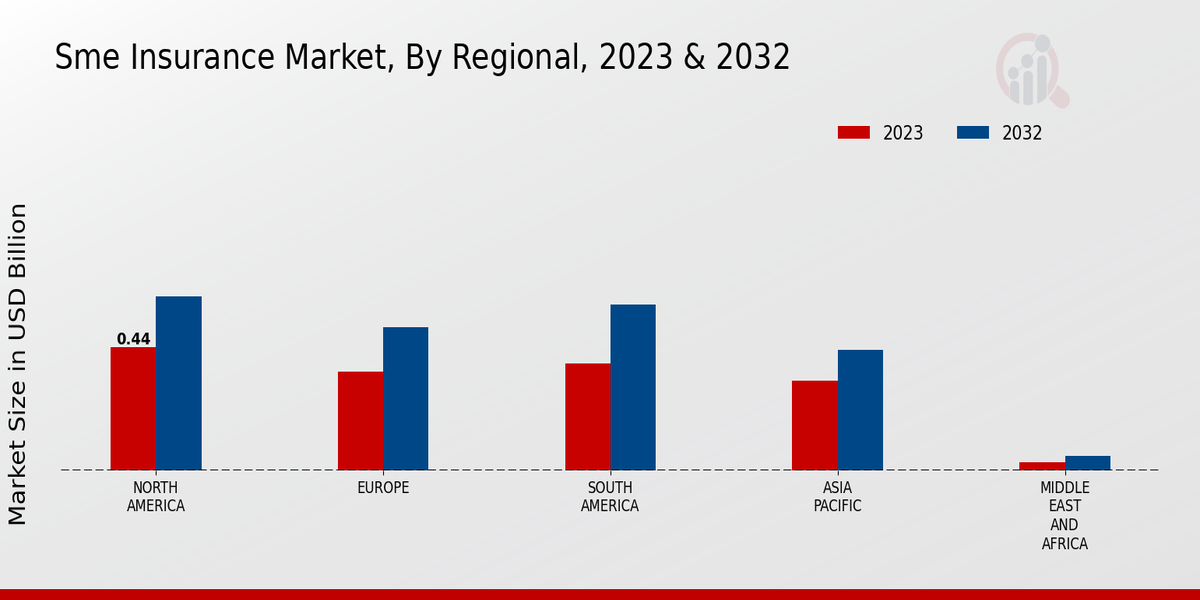Market Growth Projections
The Global SME Insurance Market Industry is poised for substantial growth, with projections indicating a rise from 28.6 USD Billion in 2024 to 55.1 USD Billion by 2035. This growth trajectory reflects a compound annual growth rate of 6.13% from 2025 to 2035, suggesting a robust demand for insurance products tailored to the needs of small and medium enterprises. Various factors, including rising awareness, technological advancements, and regulatory support, contribute to this positive outlook. The market's expansion is indicative of the increasing recognition of the importance of insurance in safeguarding the interests of SMEs.
Regulatory Support and Compliance
The Global SME Insurance Market Industry benefits from supportive regulatory frameworks that encourage insurance uptake among SMEs. Governments worldwide are increasingly recognizing the importance of protecting small businesses through insurance. Initiatives such as tax incentives for purchasing insurance and simplified compliance processes are being implemented. These measures not only enhance the attractiveness of insurance products but also promote a culture of risk management within the SME sector. As a result, the market is poised for growth, with a compound annual growth rate of 6.13% projected from 2025 to 2035.
Economic Growth and Business Expansion
Economic growth serves as a significant driver for the Global SME Insurance Market Industry. As economies expand, SMEs often experience increased demand for their products and services, leading to business growth. This expansion typically correlates with a heightened need for insurance coverage to protect assets and mitigate risks associated with scaling operations. The positive economic outlook in various regions suggests that SMEs will continue to seek comprehensive insurance solutions, thereby contributing to the market's upward trajectory. The anticipated growth to 55.1 USD Billion by 2035 underscores the potential of this driver.
Rising Awareness of Insurance Benefits
The Global SME Insurance Market Industry experiences a notable increase in awareness regarding the benefits of insurance among small and medium enterprises. As businesses recognize the potential risks they face, such as property damage and liability claims, the demand for tailored insurance products rises. This heightened awareness is reflected in the projected market growth, with the industry expected to reach 28.6 USD Billion in 2024. Furthermore, educational initiatives by government bodies and industry associations contribute to this trend, fostering a culture of risk management and encouraging SMEs to invest in insurance solutions.
Emerging Risks and Cybersecurity Concerns
The Global SME Insurance Market Industry is increasingly influenced by the emergence of new risks, particularly in the realm of cybersecurity. As SMEs become more reliant on digital technologies, they face heightened vulnerabilities to cyberattacks and data breaches. This evolving landscape necessitates specialized insurance products that address these specific risks. Insurers are responding by developing cyber liability policies tailored for SMEs, which not only protect against financial losses but also enhance overall business resilience. The growing recognition of these risks is likely to drive market growth, aligning with the projected figures for the coming years.
Technological Advancements in Insurance Solutions
Technological innovations play a pivotal role in shaping the Global SME Insurance Market Industry. The integration of digital platforms and data analytics enables insurers to offer customized products that cater to the unique needs of SMEs. For instance, the use of artificial intelligence in underwriting processes enhances efficiency and accuracy, leading to better pricing models. As a result, SMEs are more likely to engage with insurance providers that leverage technology to streamline operations. This trend is anticipated to support the market's growth trajectory, with projections indicating a rise to 55.1 USD Billion by 2035.























Leave a Comment